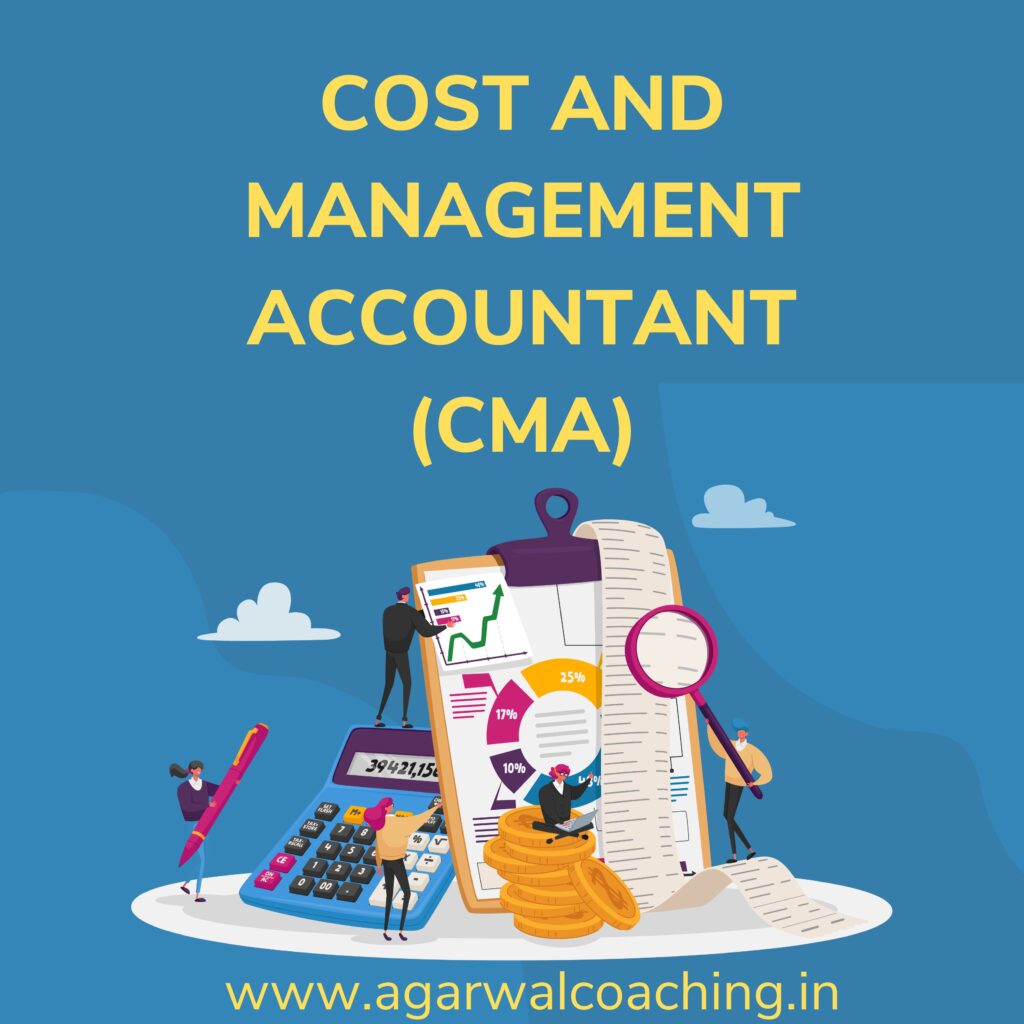Are you at a crossroads, torn between two captivating career paths that hold their distinct places in the corporate world? Both courses are renowned for their rigor, demanding a sharp intellect and a penchant for numbers. If you find yourself contemplating between the CA (Chartered Accountancy) and CMA (Certified Management Accountant) courses, you’re undoubtedly drawn to the world of finance and accounting.

Each student possesses unique abilities and interests, making it essential to evaluate both courses thoroughly. In this guide, we’ll provide you with insights into the CA and CMA courses, including their roles, benefits, durations, industry demand, and other pertinent factors. Armed with this knowledge, you can make an informed decision about which career option aligns best with your aspirations.
Let’s begin by exploring the fundamental aspects of both CA and CMA courses.
CA (Chartered Accountancy) –
You’ve likely heard that Chartered Accountancy stands at the pinnacle of prestige within the commerce stream. This highly esteemed course is administered by the Institute of Chartered Accountants of India (ICAI), the sole authority for awarding the CA degree.

Globally recognized, CA is renowned for its formidable reputation, with ICAI ranking as the world’s second-largest accounting body. It’s considered one of the most challenging courses worldwide, demanding a comprehensive understanding of financial matters.
A CA plays a pivotal role in the corporate world, shouldering responsibilities for handling intricate financial and legal affairs within organizations. The profession is demanding, requiring constant updates on evolving laws and case studies.
With expertise spanning various domains, including accounting, auditing, taxation, finance, and corporate laws, a CA is eligible for a range of job profiles, such as Internal Auditor, Portfolio Manager, and Financial Advisor, among others.
Notably, in India, only Chartered Accountants hold the authority to audit an organization’s Financial Statements, underscoring the trust and responsibility associated with this profession.
Course Structure –
The CA course unfolds in three distinct phases: CA Foundation, CA Intermediate, and CA Final, complemented by three years of indispensable practical training. This hands-on experience is an integral part of the CA curriculum, molding aspiring CAs into seasoned professionals. CA studies transcend mere textbook knowledge, equipping students to confront real-world challenges head-on.
Duration –
The journey through the CA Course spans a minimum of 4.5 years, inclusive of the mandatory 2-year articleship training period. Eligibility for the CA Foundation entrance examination is conferred upon successful completion of the 12th standard.
Demand –
Chartered Accountants boast an extensive knowledge base across various domains and hold a unique monopoly in Financial Statement auditing. Consequently, their demand is soaring in the corporate arena. Companies seek candidates capable of multitasking, a quality CAs are renowned for.
Job Profile –
The versatility of a CA’s skill set opens doors to diverse job profiles, including:
- Statutory Audit
- Internal Audit
- Advisory roles in Direct or Indirect Taxation
- Management of Transfer Pricing
- Financial and Accounting Management
- Investment Decision Making
- System Audit (post DISA/CISA certification)
- Managing Companies’ Legal Affairs, and more.
Average Salary –
For CA freshers in India, the average salary typically ranges from Rs. 6-7 lakhs per annum. This figure tends to rise with experience and proficiency. Exceptional candidates who pass on their first attempt often command offers between 10-12 lakhs, while Rank Holders can secure offers of up to 25 lakhs.
Aspiring Chartered Accountants in India can find guidance and support through numerous institutions across the country, making their journey towards this prestigious profession more accessible.
CMA (Cost and Management Accountant) –
The CMA course is intricately rooted in Cost Accounting, with a primary emphasis on Financial and Accounting Management. CMAs specialize in managing and maintaining cost records, determining the pricing of goods and services, and verifying cost-related records. It’s worth noting that not every company is required to undergo cost audits; typically, only large-scale enterprises are subject to this requirement.

While CMA has been gaining traction in India, its scope remains somewhat limited at present. Nevertheless, it holds promise as a course for the future, as CMAs are the sole authorized individuals capable of conducting cost audits for companies.
Course Structure –
Similar to the CA program, the CMA course follows a structured progression divided into three levels: CMA Foundation, CMA Intermediate, and CMA Final. Students become eligible for enrollment in the CMA Foundation course after successfully completing their 10+2 examinations.
Duration –
The CMA course typically spans a minimum of 3-4 years, inclusive of mandatory training.
Demand –
As previously discussed, the demand for CMAs is primarily driven by the necessity for cost audits, which applies to a limited number of companies. However, it is anticipated that the demand for CMAs will rise over time.
Job Profile –
CMAs can pursue various job profiles, including:
- Cost Accounting
- Cost Auditing
- Financial Planning
- Determining Prices of Goods and Services
These represent some fundamental roles where CMAs can make valuable contributions.
Average Salary –
In India, the average CMA salary usually falls in the range of 3-4 lakhs per annum. This figure tends to increase with experience and individual capabilities.
To sum up, the choice between CA and CMA largely depends on your immediate career goals. If you’re looking for opportunities in the current job market with strong prospects, CA is the preferred option. However, if you’re planning for the future, perhaps 10-15 years down the line, CMA shows promise as an evolving field. In today’s context, considering factors such as job availability, scope, knowledge, and opportunities, CA generally holds a stronger position compared to CMA.
Difference Between CA and CMA
| Basis | CA | CMA |
| Course Structure | CA course is divided into three levels.CA Foundation, CA Intermediate, CA Final along with three years of practical training. One can enroll for the entrance examination of the CA Foundation after qualifying 12th standard. | The CMA course is divided into three levels.CMA Foundation,CMA Intermediate,CMA Final.The students after qualifying 10+2 examination are eligible to enroll themselves into the CMA Foundation course. |
| Duration | The total duration in the CA Course is a minimum of 4.5 years including 3 years of articleship training. | The duration of the CMA course is a minimum of 3-4 years. Training in CMA is also a mandatory part of this course. |
| Demand in Market | Chartered Accountants are highly knowledgeable in various domains hence there demand is rapidly increasing in the corporate world.Companies are looking for a candidate who can handle various tasks and CA’s are deemed to be perfect for this job profile. | Every company is not required to get the cost audit done. Companies working on a very large scale are required to appoint the cost auditors.Hence, the demand of CMA is very limited but it is expected that the demand will rise with the passage of time. |
| Job Profile | A CA can work on the multiple Job Profiles such as –Statutory Audit.Internal AuditAdvisor in Direct or Indirect TaxationHandling Transfer PricingFinancial and Accounting ManagementInvestment DecisionsSystem Audit (after clearing DISA/CISA)Handling the Companies Legal Matters etc. | A CMA can be appointed on the following job profiles –Cost AccountingCost AuditingFinancial PlanningDetermine the Prices of Goods and Services. |
| Average Salary | A fresher Chartered Accountant can be offered an average salary of 6-7 lakhs which increases with the experience and ability.However, the candidates who passed out in the first attempt are usually offered 10-12 lakhs and Rank Holders gets to offer up to 25 lakhs. | The average salary of a CMA lies between 3-4 lakhs which increases with the passage of time and also depending upon one’s ability. |







